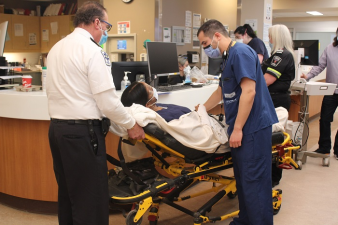Unveiling the Causes of COPD
l The development of COPD is primarily driven by long - term exposure to various lung irritants. Cigarette smoking stands as the most prevalent and detrimental factor, accounting for the majority of cases. The harmful chemicals in tobacco smoke, such as nicotine, tar, and carbon monoxide, trigger inflammation in the lungs, damage the air sacs, and narrow the airways over time. This persistent damage leads to the characteristic airflow limitation seen in COPD patients.
l However, smoking isn’t the only culprit. Exposure to second - hand smoke, air pollution, and occupational hazards can also contribute to the onset of the disease. In many urban areas, high levels of particulate matter, ozone, and other pollutants in the air can irritate the lungs and accelerate the progression of COPD. Workers in industries like mining, construction, and manufacturing often face exposure to dust, fumes, and chemicals, which increase their risk of developing the condition.
l Additionally, genetic factors can play a role. For instance, individuals with alpha - 1 antitrypsin deficiency, a rare genetic disorder, are more susceptible to COPD even with minimal exposure to external irritants.
Exploring Current Treatment Approaches
Medications
Medications form the cornerstone of COPD treatment, aiming to relieve symptoms, reduce inflammation, and improve lung function. Bronchodilators are commonly prescribed to relax the muscles around the airways, allowing them to open up and facilitate easier breathing. Short - acting bronchodilators provide quick relief during sudden episodes of breathlessness, while long - acting bronchodilators offer extended symptom control, reducing the frequency of exacerbations.
Inhaled corticosteroids are another important class of medications, especially for patients with more severe COPD or those who experience frequent exacerbations. These drugs help reduce inflammation in the airways, minimizing swelling and mucus production. In some cases, a combination of bronchodilators and inhaled corticosteroids in a single inhaler is prescribed for enhanced effectiveness.
Oxygen Therapy
For patients with advanced COPD and low oxygen levels in the blood, oxygen therapy becomes essential. This treatment involves using supplemental oxygen, either continuously or during physical activity, to improve oxygenation in the body. Oxygen therapy not only alleviates symptoms like breathlessness and fatigue but also enhances the patient’s ability to perform daily tasks and can even extend lifespan.
Pulmonary Rehabilitation
Pulmonary rehabilitation programs play a vital role in COPD management. These programs combine exercise training, education about the disease, and psychological support. Exercise training, which includes activities like walking, cycling, and strength training, helps improve muscle strength, endurance, and overall fitness, making it easier for patients to breathe and carry out daily activities. Educational sessions provide valuable information on managing symptoms, using medications correctly, and making healthy lifestyle choices. Psychological support addresses the emotional challenges often associated with living with a chronic illness, helping patients cope with anxiety and depression.
Daily Life Considerations for COPD Patients
Smoking Cessation
Quitting smoking is the single most important step for COPD patients. Smoking cessation not only slows down the progression of the disease but also reduces the risk of exacerbations and improves overall prognosis. Various resources are available to help smokers quit, including nicotine replacement therapies (such as patches, gum, and inhalers), prescription medications, and support groups.
Diet and Nutrition
Maintaining a balanced diet is crucial for COPD patients. A diet rich in fruits, vegetables, whole grains, lean proteins, and healthy fats provides essential nutrients to support lung function and boost the immune system. Since COPD can sometimes cause increased calorie expenditure, patients may need to consume more calories to maintain a healthy weight. Additionally, staying hydrated helps thin mucus, making it easier to cough up and clear the airways.
Activity and Rest
Finding the right balance between physical activity and rest is key. Regular exercise, as recommended by healthcare providers, helps improve lung function, increase energy levels, and enhance quality of life. However, it’s important to avoid overexertion and take breaks when needed. Adequate rest is also essential for the body to recover and recharge, especially during periods of exacerbation or increased fatigue.
Avoiding Triggers
COPD patients should strive to avoid environmental triggers that can worsen their symptoms. This includes staying away from polluted air, smoke (both from cigarettes and other sources like wood - burning stoves), and strong fumes from chemicals or cleaning products. Using air purifiers indoors and wearing masks when outdoors in polluted areas can provide some protection.
In conclusion, while COPD is a chronic and progressive disease, a comprehensive approach that encompasses understanding its causes, leveraging appropriate treatment options, and making healthy lifestyle changes can significantly improve the quality of life for patients. With the right management strategies and support, individuals with COPD can lead fulfilling lives and better manage their condition over time.




